BREAST AUGMENTATION
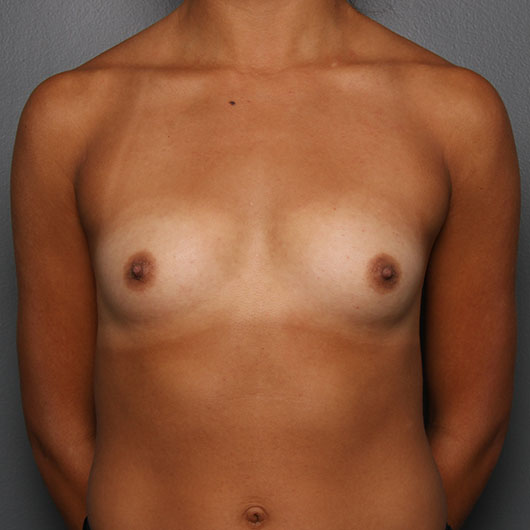

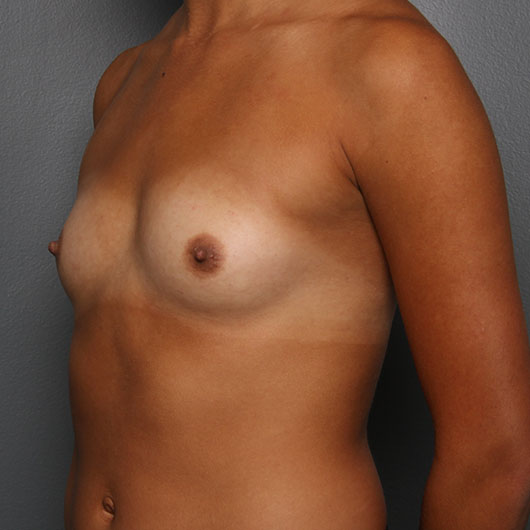

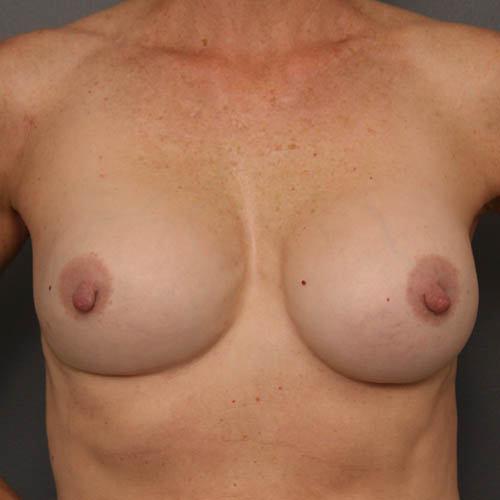
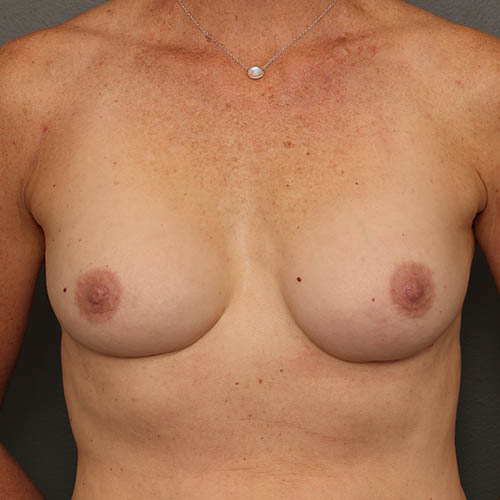


This athletic patient with a prior breast augmentation wanted better symmetry, smaller breasts, and treatment for her large nipples. Here she is seen 6 months after revision breast augmentation and nipple reduction. Reducing the size of the implant will allow the tissues to be more smooth and natural looking. It also helps when the implant needs to be repositioned. Now her left breast is a bit higher and more similar to the right and her nipples will not be as apparent in clothing. Nipple reduction is an easy add on procedure to breast augmentation.

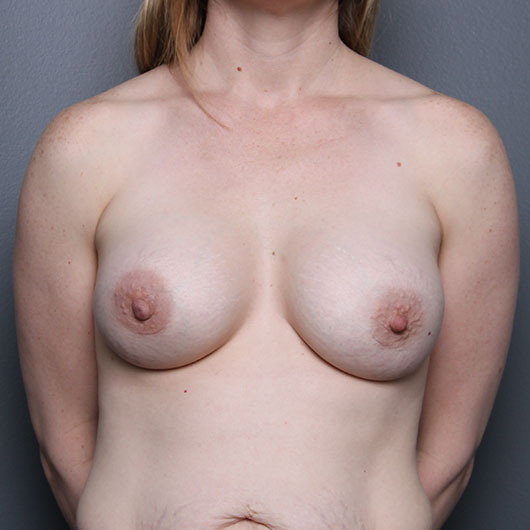


This patient had augmentation with 390cc implants. She was borderline in terms of needing a lift, and after implant placement she was happy with her result.




This patient had augmentation with 390cc implants. She was borderline in terms of needing a lift, and after implant placement she was happy with her result.
BREAST AUGMENTATION INFORMATION
Breast Augmentation is one of the most popular procedures in plastic surgery. I always say that breast implants are like a great bra. Any woman who wears a bra, should understand the potential advantages of breast augmentation.I hope you find satisfying answers to your concerns about breast surgery on this site.
Breast augmentation is an excellent choice for people who desire a larger cup size or treatment of mild to moderate sagging. Breast augmentation can be performed safely with satisfying results for (almost) anyone who desires larger, fuller breasts. Intense study of breast implant surgery over the last decade has demonstrated this surgery to be safe and effective. As with any surgery, your state of health and medical history are important to your outcome and need to be considered carefully with your surgeon prior to breast augmentation. Satisfaction with surgery relies on realistic expectations. It is important to be as informed as possible prior to surgery.
A large percentage of women have asymmetric breast tissue, muscle tissue, and/or ribs. Some patients are unaware of chest wall asymmetry at the time of their consultation, yet others present asymmetry as their biggest concern. Treatment for asymmetry has limitations and may require additional procedures to the breast tissue and/or breast skin. My preferred method is to use the same diameter breast implant on each side and adjust projection if there is a clear asymmetry of the rib projection. We can help you envision what your result might look like during your consultation.
Many women who are content with their size become dissatisfied with the appearance of their breasts as they lose fullness. Implants placed below the muscle are an excellent way to create fullness in the upper portion of the breast. Since fullness and size go together, this can be a difficult situation. Some patients will want a breast lift with implants, some patients may simply want an augmentation with fat to increase fullness without a significant size change.
There are many options for breast augmentation scars, but my strong preference is to use a location in the bottom fold of the breast. This allows the implant to get to the perfect location under the breast/muscle with the least amount of trauma. Studies suggest that lessening exposure of the implant to breast tissue is optimal because most breast tissue carries bacteria, which can lead to scar and thickened capsule around the implant.
The pain after breast implantation is similar to the pain of a pulled muscle, and a sense of pressure. Anti-inflammatory medications and ice packs reduce discomfort after surgery. All forms of light activity are allowed after surgery with caution for heavy, repetitive movements of the arms. Swelling in the muscle will create a bulkier result in the initial couple weeks. A more natural appearance will be seen after this swelling subsides, usually before the end of the first 3 months after surgery. We recommend a minimum of 3 days off work and no driving. After this, if you are not taking narcotic medication, you can return to activity as tolerated. We prefer patients start pectoralis muscle stretching immediately after surgery and continue this for the first 6 weeks or at least until complete muscle relaxation is documented.
Fortunately, major complications and infection after breast augmentation are rare. There are occasions where a secondary surgery may be required, such as cases of infection, severe bruising, excessive scar formation, or malposition of the implants. Capsular contracture is a process where the thin scar capsule around an implant begins to harden. You may feel an uncomfortable tightness in your breast or notice a change in position. This process can occur early or quite later (years) after implantation. Capsular contracture is treated by removing implants and replacing them after removal of this scar layer. Though patients may feel pressure to want revision surgery immediately, revisions are not safe for at least the first 6 months after surgery. You need to let your body recover before you will have the best ability to heal a second surgery.
Breast implants do not influence a woman’s risk of breast cancer nor do they influence the prognosis of breast cancer relative to women without implants. Mammographic screening is not adversely affected by implants as long as the exam is performed by an experienced facility. You should inquire about the expertise of your mammographer at the time you schedule your screening or get a referral from your surgeon for an experienced center ahead of time. An extremely rare form of cancer can be found in patients who have textured implants. This cancer is actually easily treated by removal of the capsule. If you have textured implants and develop a fluid collection years after your implant surgery, you should inform your surgeon to have the fluid tested.
After an exhaustive search to link these conditions to breast implants, none has been found. Occasionally a small or poorly performed study will suggest an association between breast implants and illness. The well researched health outcomes after breast implant surgery support their safety. If you have an autoimmune condition, it is wise to discuss this with your treating physician. Again, there is not a cause effect relationship between breast implants and illness, but it is very difficult to demonstrate with scientific accuracy that implants may make some people have worsened symptoms. The good news it that implants are easily removed if you feel they are a cause for a decline in your health.
Yes. Unless your breast implants and scar tissue from prior surgeries have created irregularities in your breast tissue, you should be able to return to the same shape and position after breast implant removal. Most people after implant removal will look similar in a frontal two dimensional view, meaning you nipple position will not be affected. However, your profile, upper pole fullness, and projection will decrease. This is a service we offer under local anesthesia in the office.
There is no evidence that breast implants adversely affects pregnancy, breast-feeding, or the health of breast-fed children. Implants can cause spontaneous lactation in some women. This condition is usually self-limited and can be treated with medication.
The nerves to the nipple area are stretched by the implant and usually return to normal several weeks to months after surgery. The larger the implant the more potential nerve involvement there will be. I use a technique which does not involve cutting or burning of the inner tissues, but even stretching can cause increased or decreased sensation and numbness near the incisions.
Yes, but the likelihood of this is small, particularly with the current generation of implants. Some manufacturers provide a life-time warranty against rupture. When saline implants leak, your body simply absorbs the fluid. It is not easy to determine when silicone implants leak, but nearly a fourth of women with silicone implants having surgery for capsular contracture were found to have leaking implants. There is no evidence that silicone leak is dangerous, however it can cause a foreign body reaction in some women which presents like a breast lump. Fortunately, the new cohesive gel silicone implants offer increased protection against silicone migration. They are a more solid consistency and do not have the option to leak into breast tissue like the older liquid silicone implants.
The most important way to maximize your time with the surgeon during your consultation is to inform yourself as much as possible beforehand. Talk to other women who have had implantation, review website information, etc. Inform yourself about costs and financing prior to your visit. Use your consultation to get to know your surgeon. Do you feel that they understand your needs? Do you feel comfortable with them?
Our office provides a range of implants to “try on.” Wear a tight-fitting shirt and bring a few other t-shirt options as you view different volumes. Bring a friend only if you want their opinion! Implant size is very personal and the right choice is the one that will make you comfortable and happy. Try not to let others influence your decision or my may not be happy later on. You should know that there is an increased chance of certain types of problems associated with implants in the largest size ranges, and even the smallest size ranges. What is considered large depends somewhat on your body composition. This will be reviewed at the time of your consultation.
Removal of breast implants is a very straight-forward procedure with minimal recovery. For the most part, this can be performed under local anesthesia in the office with minimal expense and downtime. In most cases, the breast shape will simply revert back to its natural state. In other cases, fat grafting or a breast lift procedure will be needed to have the nicest result possible.
